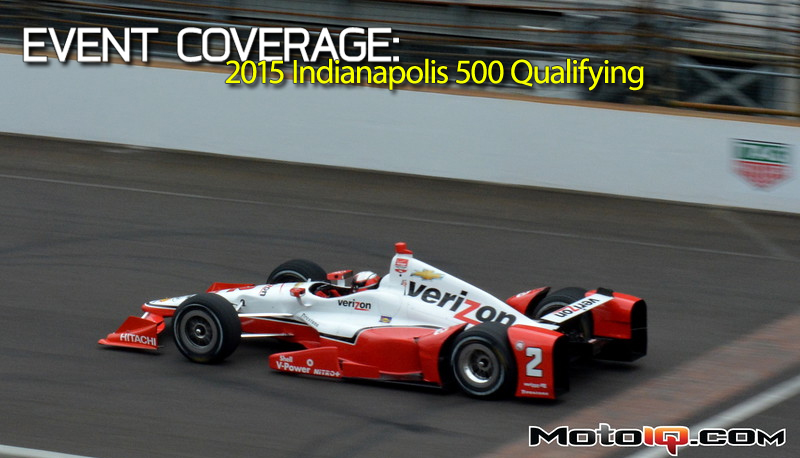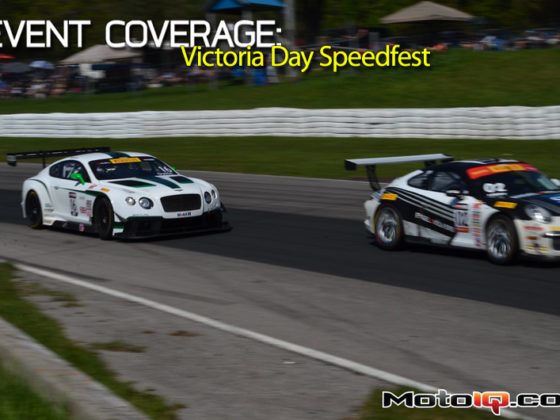Event Coverage: 2015 Indianapolis 500 Qualifying
The stories going into qualifying for the 99th running of the Greatest Spectcle in Racing were supposed to be grand. New aero kits. Ed Carpenter going for a record setting third straight 500 pole. Chevy's dominance in racing. Team Penske's dominance in qualifying. Honda's desperate attempt to close the gap to Chevy. And the biggest story of all: would the long standing 1996 track record finally fall?
Instead, the story of the weekend was Murphy's Law. Qualifying for Indy has always been odd. Unlike most races which use a single fast lap time, at Indy drivers run individually for four timed laps. The speeds of the four laps is averaged and this sets driver position. For the better part of Indy’s history, this was done over two separate weekends, to help ensure each entrant got a chance to qualify. When entry lists dropped from 100 to 35, this no longer made sense. In 2010 qualifying was cut down to two days. This compressed schedule reduced fans’ travel expenses and was widely regarded as a smart move. Unfortunately, weather was never taken into account: a rained out Saturday would compress qualifying into one day, making it very difficult to not only push everyone through, but for Pole potentials and Bump candidates to make second attempts. In 2015, weather finally came into play, raining out Saturday altogether. Sunday’s weather looked just as touch and go, with a 40% chance of rain forecast through much of the day.
 Not this again…we’ve had enough of overcast Indy events to last us a lifetime
Not this again…we’ve had enough of overcast Indy events to last us a lifetimeBigger than the weather, was the story surrounding a string of rather scary accidents involving the latest breed of IndyCars. On Wednesday, Team Penske got the setup wrong for Helio Castroneves and he went on a wild ride when his car spun backwards in Turn 1, clipped the wall, and blew over like a kite caught in a bad breeze. Helio was unhurt and his car was quickly repaired. This would have been written off as a fluke, but then Josef Newgarden had a similar issue the very next day. In his case, his accident was caused by a tire going down, sending him into a spin between Turns 1 and 2. Despite the very different cause, the result was the same: the car went backwards into the wall and blew over, skidding on its rollhoop. Newgarden was also unharmed in his accident, though he was visibly shaken. Despite two incidents of airborne and upside down cars, IndyCar played it cool, working with both Chevrolet and Honda engineers, trying to discern the cause of the acrobatics. IndyCar’s calmness snapped suddenly when during Sunday practice…
Ed Carpenter spun and crashed, also flipping on his lid. Once again, Ed was unhurt and walked away from his accident, angry and upset: the crash wrote off the car and ruined any chance he would have for landing a third straight pole. His crash though sent IndyCar into a frenzy. Practice was halted and engineer were gathered for a meeting to decide what to do. Some pundits blamed Chevrolet and their aero kit for the flips (all three airborne crashes involved Chevrolet cars). Chevrolet refuted this claim with their own data, but IndyCar insisted this was an IndyCar problem and had nothing to do with the aero kits. After delaying practice and qualifying for three hours (and leaving the fans with very little information), IndyCar CEO Mark Miles and IndyCar Technical Director Derrick Walker met with the press to announce their solution.
 The proposed solution was to lower boost pressure back to racing boost and to mandate all teams run in race spec bodywork. Throughout the week, teams had been testing various body panels and configurations, reducing drag for qualifying. IndyCar would forbid those parts in hopes of reducing speeds. Walker stood by the decision that this was not unique to Chevrolets and that it was only prudent to slow both Honda and Chevrolet cars until a permanent solution could be found. Fans were puzzled: Only Carpenter’s crash had occurred in qualifying spec. How would banning the qualifying setups prevent blowovers? We’ll get into this later, but suffice it to say that this last minute rule change wasn’t much more than a pacifier for the lawyers. IndyCar announced a final practice session to allow teams to test their setups before each car would get a single qualifying attempt, with a 30 minute bump session to determine the lone car that would not start the 99th Indianapolis 500.
The proposed solution was to lower boost pressure back to racing boost and to mandate all teams run in race spec bodywork. Throughout the week, teams had been testing various body panels and configurations, reducing drag for qualifying. IndyCar would forbid those parts in hopes of reducing speeds. Walker stood by the decision that this was not unique to Chevrolets and that it was only prudent to slow both Honda and Chevrolet cars until a permanent solution could be found. Fans were puzzled: Only Carpenter’s crash had occurred in qualifying spec. How would banning the qualifying setups prevent blowovers? We’ll get into this later, but suffice it to say that this last minute rule change wasn’t much more than a pacifier for the lawyers. IndyCar announced a final practice session to allow teams to test their setups before each car would get a single qualifying attempt, with a 30 minute bump session to determine the lone car that would not start the 99th Indianapolis 500. Teams scrambled to install race ready bodywork, adjust setups, and get their cars through tech inspection before practice.
Teams scrambled to install race ready bodywork, adjust setups, and get their cars through tech inspection before practice. On camera, the drivers were very gracious, thanking IndyCar for looking out for their safety. However in the cars, you could see how annoyed they were. The mood throughout the garage was one of frustration as teams had to shred their carefully laid plans and throw crap at a wall to see what stuck.
On camera, the drivers were very gracious, thanking IndyCar for looking out for their safety. However in the cars, you could see how annoyed they were. The mood throughout the garage was one of frustration as teams had to shred their carefully laid plans and throw crap at a wall to see what stuck.



